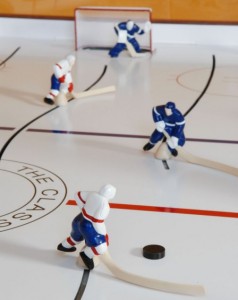I was reading the February 2010 issue of the Reader’s Digest the other night when I came across and article that was about Olympic athletes and how they could do there best at the Olympics. As I was reading the article I realized that the five points that the author Stuart Foxman made about being your best could also be applied to a yoga practice if you took a little thought to translate from competitive sports to non competitive yoga.
 Understand Pressure
Understand Pressure
This was the toughest one to adjust to the yoga mindset.
Pressure comes from the importance of the event and the uncertainty about the outcome. Is it the final heat in your Olympic event? Is it the seventh game of the Stanley Cup finals?
Most pressure comes from being unprepared and being prepared leads to confidence. Training for an event helps you to deal with the pressure. The more you practice for an event the more confident you will become in your ability to perform well.
So where does the pressure come from in a yoga practice. I think that it comes from your ego and your desire to as well this time if not better with your practice than you did last time. If you perform poorly (in your estimation) your ego will put pressure on you to perform better next time.
You are learning some new poses and you want to do them better this time than you have done before. The only source for the pressure is coming from within you and your desire to improve.
The thing to realize is that there is no requirement to better this time compared to the last time. David Williams said that every yoga practice that you do is your best yoga practice ever. It does not matter if the postures were better executed this time or if they were worse than before. Completing your yoga practice makes it good.
Accept your yoga practice for what it is today. There is no pressure to perform better. Tell your ego that your practice is good enough.
Focus on the Now
Take it one period / inning / game at time. Thinking about the future is not beneficial. You’re aware of the ultimate objective, but you need to narrow your focus to: What do I need to do right now? This means ensuring a focus on expectations. And the expectations are in the near term, not the end of the season.
This is the same in yoga. Focus on the one pose you doing. There is no need to look ahead to all of the poses that are coming. Focus on this pose. Focus on the alignment, the breath, the gaze. Focus on your thoughts. Bring your awareness to the present moment and enjoy this pose. The next pose when it comes will take care of itself.
Be Self-Aware
Continue to focus on the fundamentals tasks while playing the game. Focus on what you just did and what you want to do better next time. Managing body, mind and feelings is a learned skill. Notice what you are thinking or saying and decide if it’s helpful. We have the capacity to step back, observe ourselves and ask what is required in this situation.
Boy does that sound like working on a yoga pose.
Focus on the fundamentals: the gaze, the breath, the bundahis, the alignment, the muscles (which ones are engaged, which ones are relaxed).
Where is the mind? Is it focused on the pose or has it gone to the future, the past or even left the room. Keep the mind focused on the posture as well.
How well did you do the pose last time. What do you want to differently this time to improve the execution of the pose?
Banish the Negative
There is always more than one way to look at a situation so you may as well re-frame it into a positive viewpoint. Your feelings move in line with your thoughts. Negative thoughts will lead to a tense body and a poor performance. Positive thoughts lead to a relaxed body and an improved performance. So you may as well adopt a positive point of view.
Focus on what do you want to do this time. Rather than trying not to fail, describe what you are going to do. When you are motivated by a fear of failure you eventually reach a point of diminishing returns.
Again this directly applies to your yoga practice. I often tell new people in my classes that when the negative thoughts start to crowd your mind it is time to take a break, rest and reflect on your practice.
When working on a challenging posture, review what you are going to do this time rather than what went wrong last time.
Visualize to Win
Envisioning specific circumstances, like what to do in a two on one break away will help you to prepare for that event when it actually happens. Envision throwing a ball, and your neuromuscular pathways will fire in exactly the same way as if you were actually throwing the ball.
Painting a clear and concrete picture of what you want to achieve fills the gap between theory and execution.
This also applies to your yoga practice. Visualize yourself in the posture. See the legs and arms folded into the proper position with the binding happening. This visualization will eventually lead the body down the path to the fulfillment of your vision.
That’s the five techniques
Four of the five techniques directly apply to a yoga practice with very little thought required to move them from competitive sports to non competitive yoga. The first technique applies as well when you replace the big game with your ego and its desire to achieve.
Follow these techniques and your yoga practice and your enjoyment of the yoga practice will improve.



